-
Finding Treasure: The Art of Lisa Bryan

I was happily thrifting in Carmel the other day, when I came across a map. Normally, I am completely uninterested in maps, but this one immediately caught my eye. Delightful images were happily scattered across a very detailed map of Carmel. I had discovered a treasure map! All the places I know and love were depicted so magically, I knew I had to have it! After I purchased the map, I went online to learn more about the artist, Lisa Bryan, and discovered she is also an author. I purchased her book, Sketches of Carmel-by-the-Sea and was smitten. I wanted to learn more about the creator of these lovely pieces of art.

Generic photo, source pixabay.com According to her LinkedIn page, Lisa has been painting all her life. She works primarily in oil, watercolors, and ink. She creates not only one of a kind maps of the Carmel area, but also commissioned paintings, including homes, and will even include beloved dogs in her paintings! Her art has been made into posters, calendars, cards, prints, and books. She also creates puzzles and even hand-painted hats! You can see more of her beautiful artwork yourself by visiting Lisa Bryan, or Visit Carmel, I guarantee you will be charmed, just like me!

Many of Carmel’s quaint buildings are featured in Lisa Bryan’s artwork. From the Cottage of Sweets to the Tuck Box to beautiful animals, you will treasure everything Lisa Bryan creates. You can find her items in many shops in Carmel, on her website Lisa Bryan and also online including fine art venues, Amazon, and eBay. Thank you for visiting my blog! You may also enjoy Holiday Charm in Carmel by the Sea. Wishing you peace, love, joy and beautiful vistas.
-
Your Dog & New Puppy: Top Tips
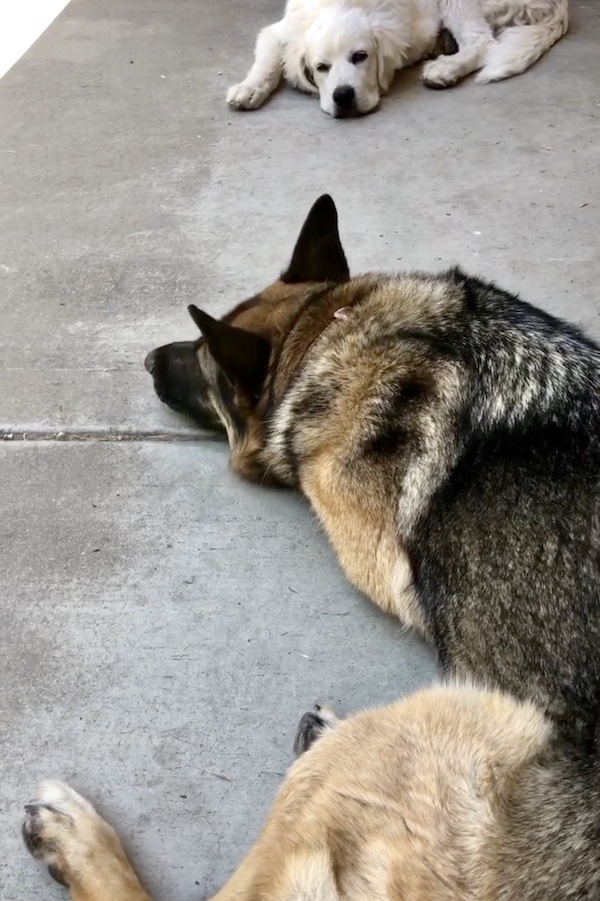
I was so worried when I adopted my Great Pyrenees rescue puppy. I didn’t know how my older German Shepherd would react. She has never enjoyed socializing with other dogs and is known to be quite the stinker. Whenever other dogs approach her, especially larger dogs, there is often growling and barking. She shows no indication she wants to be friends with them. I always make sure to keep her on leash if we are going to be around other canines, just to be on the safe side. My worries increased when I read online that German Shepherds and Great Pyrenees do not generally get along. But something told me that I had to try.

I made sure to get a male puppy, since I had learned that often same sex dogs can have issues (although I previously owned two female terriers and had no problems). When I brought Jake home, I initially let Sasha view him from behind a glass door, and of course the aggressive barking ensued. After a few days of this, I brought her out on a leash, and let her get within sniffing distance. She immediately became aggressive and tried to nip at the puppy. My instinct was to yell at her, but this did not help at all. Then I tried some different strategies, and they worked miracles. I am certainly not a professional dog trainer, but I wanted to share what worked for me. Here are my top tips for introducing your dog to a new puppy.
- Use Treats. Sasha’s number one preferred reward is food, so I used treats to help them bond. I would bring Sasha near the puppy on her leash and every time she did not growl at him or get aggressive I gave her a treat. So I was rewarding her for good behavior rather than punishing her for bad behavior. I also gave the puppy treats, and they both were more focused on getting a dog biscuit than anything else. I gradually amped this up to 2-3 times a day, and eventually, the aggressive behavior was extinguished. Keep in mind that these interactions should never be forced. I like petmd.com’s advice to “look for signs that one dog is trying to get away…if your dog runs over to you, don’t send them back ‘into the fire’ because this is usually an indication that your dog needs a break from the interaction”.
- Give your older dog plenty of Love and Attention so he or she does not feel jealous of the new puppy. I continued my routines with Sasha, included one on one throwing her toys for her to fetch. I also brushed her, and gave her lots of petting, praise and kisses.
- Exercise Your Dog and Puppy Together. Jake was not leash trained when I brought him home, but Sasha was used to going for daily walks with me. I purchased a puppy stroller at a thrift store, and used it to take Jake with us until he became leash trained. Initially she tried to nip at him, but he was safely velcroed in the puppy stroller. Eventually, after a few times, she accepted that this was part of our walking routine, and Jake loved watching her lead our team down the road. Now that he is leash trained they trot side by side together. It’s so cute to see Sasha tolerate his frequent displays of affection for her.
- Let Them See Each Other But Keep Them Separated When You Leave. I did not ever leave my dog and puppy alone together for several weeks, just to be on the safe side. I kept Sasha in my mud room, and let her see Jake through the glass doors. You could use a baby gate or crate to separate them too if your older dog is initially hostile. It helps them get used to each other but protects your vulnerable puppy from being hurt. The puppy wanted so badly to play with her, but it wasn’t safe. They were able to develop a bond by seeing each other safely. He now pushes the door open if Sasha is in the mud room to let her into the house!
- Always Let Your Older Dog Have Some Time Alone. If you have ever been the Mom of a toddler, you will know how exhausting it is just maintaining your sanity with all their antics, however cute they may be. You can imagine how it feels for an older dog when there is a puppy, constantly demanding attention from them, jumping on them when they are trying to relax, chewing on their ears, taking their toys, etc. I make sure to let Sasha have time alone, even now when they absolutely adore each other. It enables her to have time alone to do what she wants without Jake’s constant shenanigans. According to the American Kennel Club, you should give your older dog breaks from the puppy several times throughout the day, crating either dog if necessary.
- Make Sure to Get Toys & Bones for Both Dogs. Sasha is very protective of her toys and bones, so I made sure to get extras for the puppy. Jake learned quickly not to take one away from her due to her warning growl. Unfortunately, Sasha will still occasionally steal things from him. If I see her steal Jake’s toy or bone, I simply give him a different one and the issue is resolved.
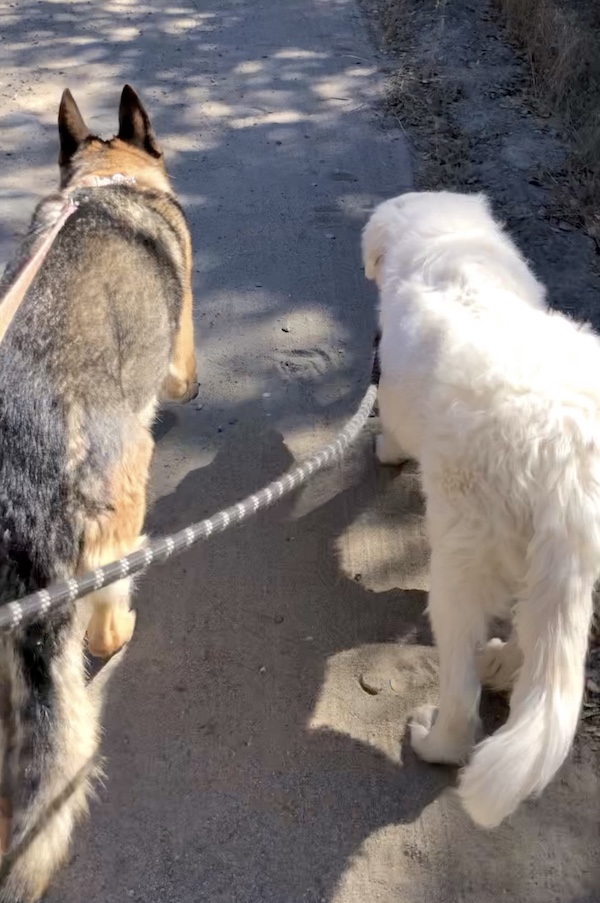
I hope you found these tips helpful. For more information on this topic, you may want to read these informative articles by AKC and Pet MD. You may also enjoy reading Puppy Love! Favorite Dog Quotes. Thank you for visiting my blog. Wishing you peace, love, and happiness!
-
Feed Chickens This for Super Healthy Eggs!
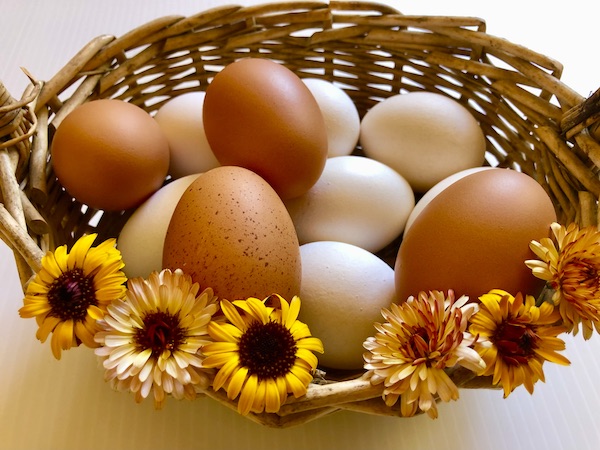
I was recently reading a story about a local couple here in California who are selling their designer eggs to upscale restaurants for $20.00 a dozen. Apparently they feed their chickens superfoods such as acerola cherry and camu camu powders (I had to look these up!) and give them coconut water to drink. While I am in awe that someone would go to such lengths to have healthy chickens and eggs, the truth is, it simply isn’t necessary. You don’t need fancy products to get healthy eggs. Here’s what to feed your chickens to ensure their eggs are as healthy as possible.
Free Range Them
The number one thing you can do to promote healthy egg laying is free range your chickens, which allows them to forage for insects, grains, and grasses. Chickens are natural foragers. But if you simply can’t due to the threat of predators, etc. here’s what you should feed your chickens.
Fresh Water
Access to fresh clean water is the number one thing chickens need to produce healthy eggs. Did you now that an egg is actually half water? Water is incredibly important or your chickens will become dehydrated and your egg production will plummet.
Protein
Insects are high in protein and your chickens will go gaga over them. You can give them worms or bugs from your garden or purchase mealy worms or crickets for them. Mine just loved the grubs I found when splitting wood from a dead tree on the farm. You can also give them cooked eggs, never raw. My chickens love both boiled and scrambled eggs. I also grow wheatgrass from seed as this has a high protein content and my chickens find it very tasty. Grass hay mixed with alfalfa, something I give my goats, I also give my chickens as it adds needed protein for healthy eggs.
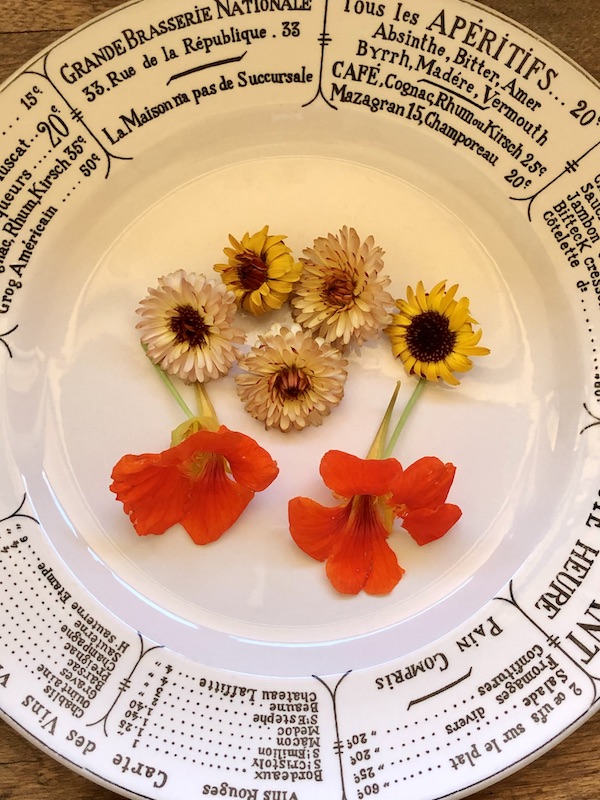
Flowers, Herbs & Vegetables
I give my chickens greens from my garden daily, including spinach, Swiss chard and lettuce. Other vegetables they love include tomatoes, pumpkin, and broccoli. (Do NOT give them avocados as they contain a component known as persin, which is lethal to chickens). In the spring, I forage my farm for wild miner’s lettuce and dandelion greens which they absolutely love to eat. Herbs are also provided from time to time, including basil, mint and oregano. Flowers such as nasturtium, calendula are also good for healthy eggs. Did you know that oregano can help prevent disease in chickens? Studies show that using oregano as well as garlic can help eliminate the need for artificial antibiotics. But if giving chickens garlic, be aware that it can affect the taste of your eggs.
Grains
I only feed my chickens organic chicken feed that has good nutritional value. Other grains you can provide include oats, barley, millet, flax, rye, and sunflower seeds. If you soak the seeds for 1-4 days they will ferment and this will add probiotics to help protect against harmful bacteria such as salmonella and E-coli. I also give my chickens foraged wild grasses which they enjoy scratching and pecking at to get the grain.
Fruits
Healthy fruits for chickens include watermelon, cantelope, cherries, berries and the like.
Calcium
Calcium is necessary to keep both the chickens and the eggs healthy. If you don’t feed them enough calcium, you will notice that the shells on your eggs are thin and flimsy. This can lead to breakage. I prefer to give my chickens oyster shells which you can purchase at most feed stores or online. You can also give them ground up eggshells, but I don’t recommend this as it could lead to the chickens pecking at their own eggs if they are looking for more calcium. A chance not worth taking, because eating their own eggs is a very hard habit to get rid of.
Providing your chickens with a healthy and varied diet will provide you with the healthiest eggs ever. Try to avoid giving them table scraps or foods with little nutritional value. And never give them food that is rotting or spoiled. To find out more about what not to feed your chickens, see 15 Things You Should Avoid Feeding Your Chickens.
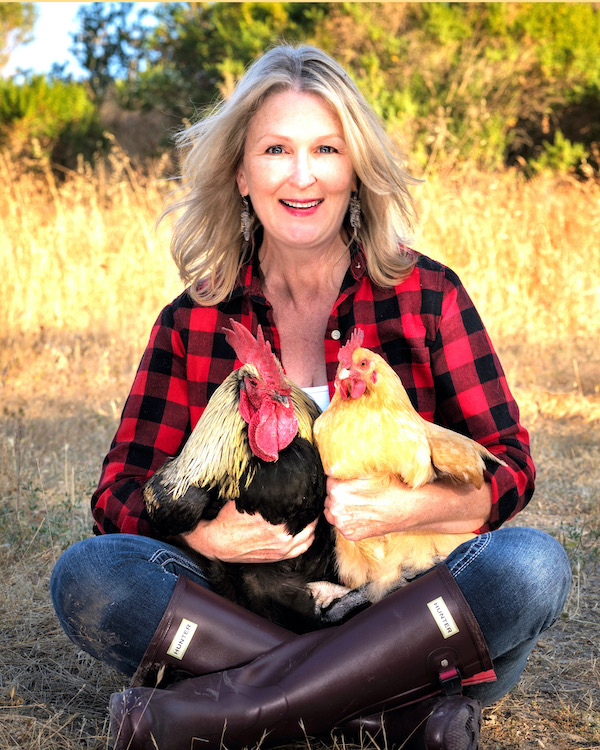
Thank you for visiting my blog! Wishing you peace, love, happiness, and healthy chickens and eggs.